On A Mission To Say The Best Goodbye
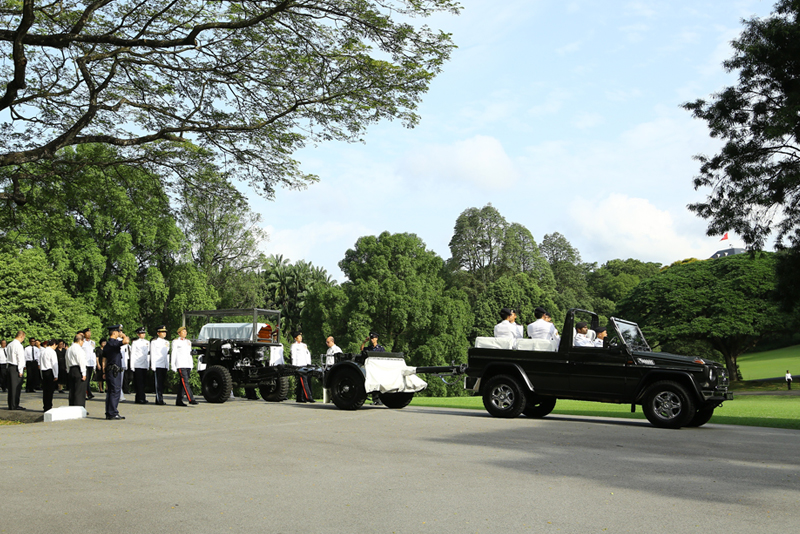
Photo courtesy of Ministry of Communications and Information.
It was about 3.30am Singapore time on Monday, March 23, when Senior Lieutenant Colonel (SLTC) Paul Koa, from the Ministry of Defence (MINDEF), received a text message informing him of the demise of Mr Lee Kuan Yew, Singapore’s first prime minister. SLTC Koa was wide awake as he was in a time zone eight hours behind Singapore, visiting his children.
SLTC Koa is part of the State Funeral Organising Committee (SFOC), which had facilitated the state funerals of two former deputy prime ministers, Dr Goh Keng Swee and Mr S Rajaratnam. The committee is led by the Chief of the Defence Force, and supported by the Commissioner of the Police and the Principal Private Secretary to the Prime Minister.
When Mr Lee was admitted into hospital in February, the SFOC was put on alert, with SLTC Koa as the main coordinator. He worked with key officials of different agencies to put together a plan that could be activated at a moment’s notice.
This included traffic arrangements with the Land Transport Authority (LTA), coordination with the Foreign Affairs Ministry on receiving foreign dignitaries, and communication of updates to the public with the Ministry of Communications and Information (MCI).
On that March 23 morning, surmising that the other SFOC members did not respond to the text message because they might be asleep, SLTC Koa instructed the MINDEF operations centre to call them to ensure they got the message. Meanwhile, he made plans to return to Singapore as soon as he could.
At 6am later that day, the SFOC met at the Parliament House to set in motion the biggest state funeral Singapore had ever seen.
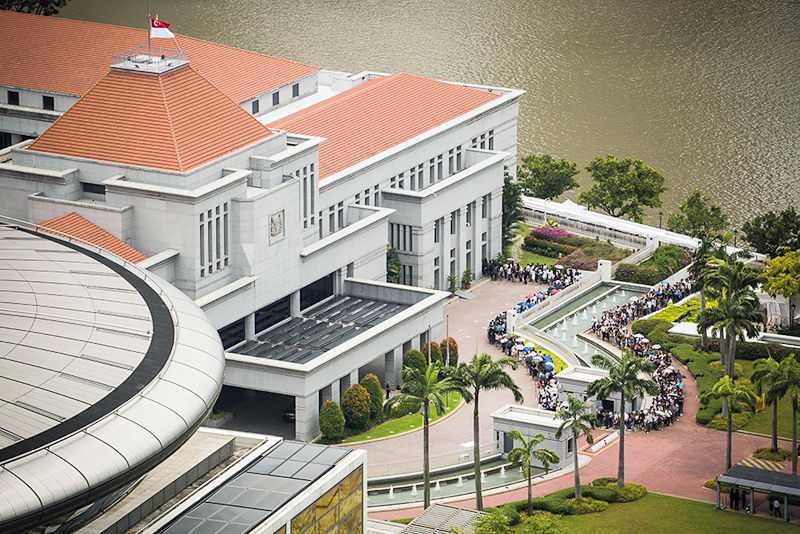
Photo courtesy of the Public Service Division.
Cutting away queues
The SFOC knew that the death of Mr Lee would evoke an emotional response from the public but it did not anticipate the overwhelming crowds that would line the streets during the four-day Lying in State (LIS) period, SLTC Koa told Challenge.
In that week, nearly half a million waited for as long as ten hours, in the hot sun, to pay their last respects to Mr Lee at the Parliament House.
In fact, four to five informal queues began to form immediately after Mr Lee’s body was transferred to the Parliament House for the LIS on Wednesday, said Mr Lau Peet Meng, Deputy Commissioner of Police (Operations).
One queue at Circular Road snaked through the streets in the midst of moving vehicles, forcing the police to close the road temporarily for safety reasons.
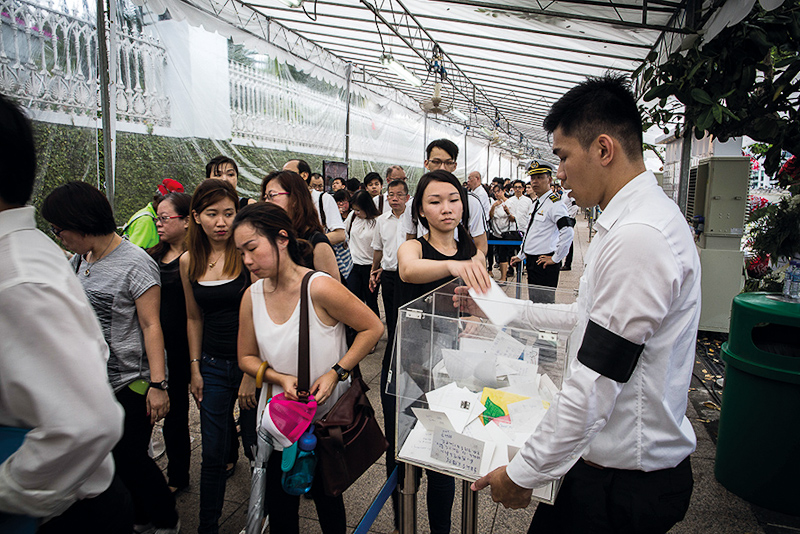
Photo courtesy of the Public Service Division.
“We wanted to make sure that we eventually had one main queue so that it would be very clear to the public and they would be able to queue in an orderly manner,” said Mr Lau.
The police had to find and stop the different queues from growing further. They managed to do so by reviewing CCTV footage of the vicinity and also by studying photos and messages about the queues posted publicly on Facebook and Twitter. A video by The Straits Times that showed a reporter tracking down the queues also helped.

Photo courtesy of the Public Service Division.
Police officers were stationed at the different queues to stop people from joining, and direct them to the official one near Hong Lim Park. To complement the Police’s effort, MCI officers worked quickly to disseminate information through all channels about the changes and provide clear instructions for the public.
“Once the information went out… people would know what to do… That made it easier for us to implement the changes,” said SLTC Koa.

Help from the ground
As Mr Lau watched the crowd swell on the first day of the LIS, he called the People’s Association (PA) to see if its tribute site at Hong Lim Park could double as a holding area where drinks and food could be provided to the crowd. Within hours, the site had swung into action.
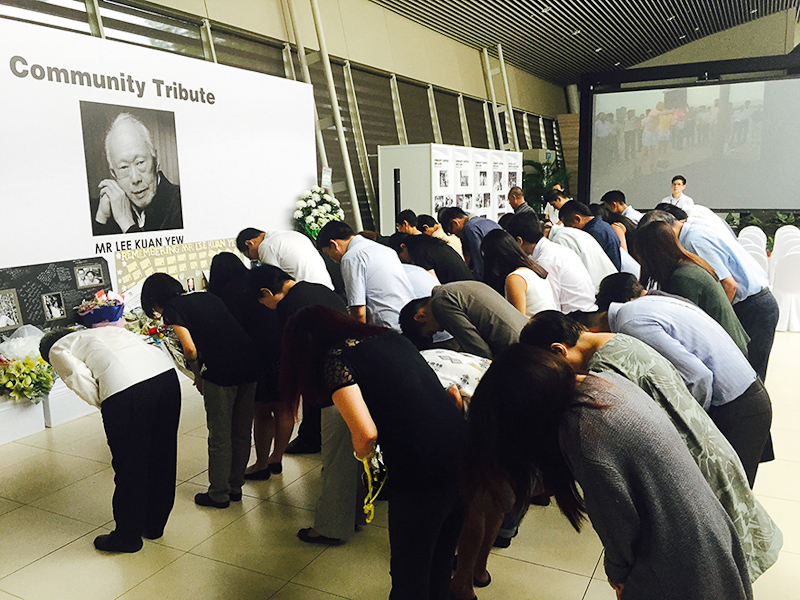
Photo courtesy of Ministry of Communications and Information.
Hong Lim Park was one of 18 community tribute sites that sprouted up rapidly after the death of Mr Lee was announced. The sites, visited by about 1.2 million people during the week of the LIS, took some load off the Parliament House as the main location for those seeking to pay their respects. “We told the PA to set up sites in the north, south, east and west… but they did a lot more and came up with 18,” said SLTC Koa.
The PA called upon its grassroots leaders early Monday morning. By 8am, the volunteers were already setting up their respective tribute sites, many of which were at community centres, said Mr Pow Choon Ghee, Director (South West Community Development Division). Some volunteers even extended their originally planned 12-hour shifts to 16 or more hours to run the sites.
“Camp Padang”
Despite the SFOC’s efforts to spread the crowd to other tribute sites on the first day, mourners continued to throng the Parliament House, and the waiting period started to stretch overnight.

Photo courtesy of Ministry of Communications and Information.


Photo courtesy of the Public Service Division.
Not all in the committee were comfortable with the idea. Some were concerned that the public might be confused about the change in queue location, and that the Padang would have barricades and refuse that could not be cleared in time for the 21-gun salute at the funeral procession four days later.
But in the end, the committee put the Padang plan into action after reviewing all options.
This was at about 8pm on Wednesday. MCI representatives urged the committee to announce the move that very night, because the public would need to know where to queue the next morning. Two hours later, there was a press release to inform people to go to the Padang on Thursday morning. The Police also worked with the LTA and SMRT to put up signage at MRT stations, directing mourners to the start of the queue at the Padang.
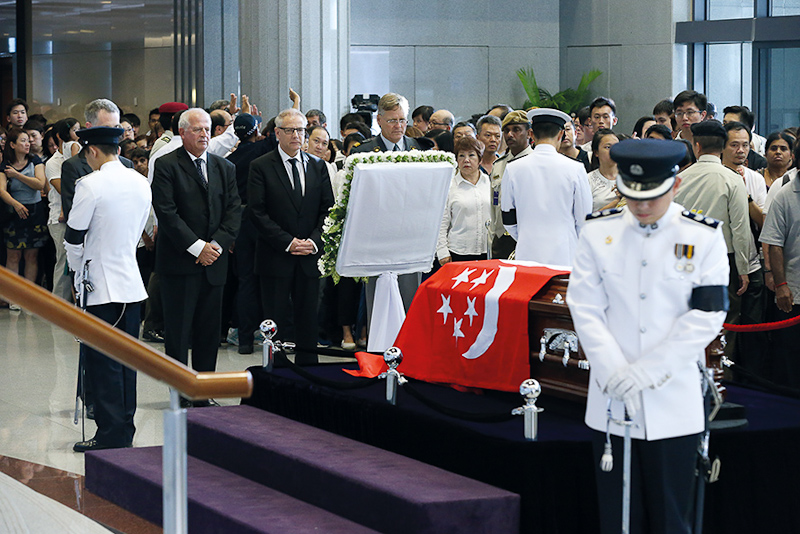
Photo courtesy of Ministry of Communications and Information.
Throughout Wednesday night, police officers worked together with the Singapore Armed Forces (SAF) officers to set up approximately 1,000 barricades at the Padang, while the SAF erected about 300 tents.
“We turned the Padang into … ‘Camp Padang’,” said SLTC Koa with a laugh, referring to the sea of dark green tents that covered the area.
“It was probably the most significant decision we took with regard to the public that paid off,” said Mr Lau.
When the National Environment Agency heard the call for help to clean up the Padang, its officers and volunteers stepped up to the task. Together with SAF personnel, they worked overnight on Saturday to prepare the Padang for Sunday’s funeral procession.
“By about 3am on Sunday they reported that everything was done. So [they] saved the day,” said SLTC Koa.

Photo courtesy of Ministry of Communications and Information.
A single-minded Public Service
To support the one-week mourning period, the SAF activated more than 6,000 men and the police personnel clocked in about 15,000 man days.
“I was very worried because we were deploying guys for 20 hours at the Padang; then the next day, they were driving cars and responding to [incidents] for their routine operations,” said Mr Lau. But he was touched when each officer he met told him that they just wanted to do something for Mr Lee.
Many other public officers tirelessly gave their time too. Ms Michelle Loh, Senior Manager, Communications Group in the Prime Minister’s Office, shared that the vigil guards were SAF regulars and many National Servicemen who had come forward.
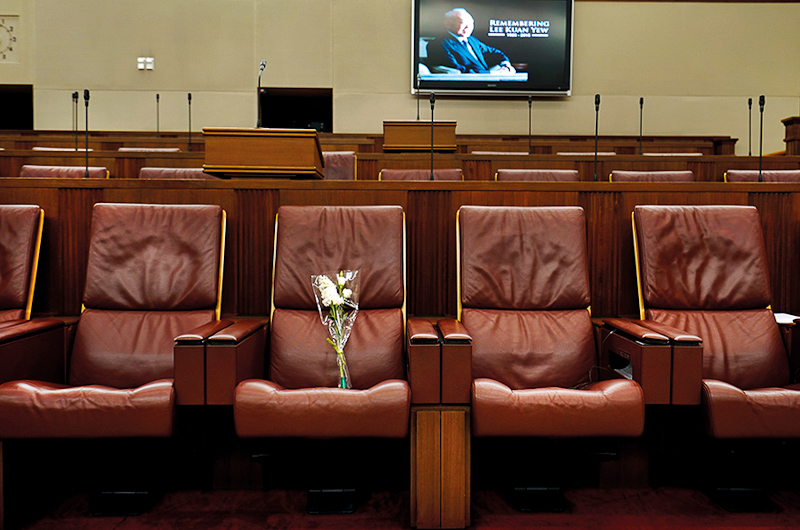
Photo courtesy of Ministry of Communications and Information.
She added: “Rank didn’t matter. Everyone just came together.”
An SAF officer, after manning the pram deposit station at the priority queue, commented that he had become an “expert” at folding different types of prams, recalled SLTC Koa.
As for the SFOC, they parked themselves at the Parliament House for four days straight, and put in 40-hour shifts during the week, said Ms Loh.
She recalled a senior commander shaving at the table in their meeting room and realised that he had stayed at the Parliament House for many hours beyond his shift as he wanted to stand by his team.
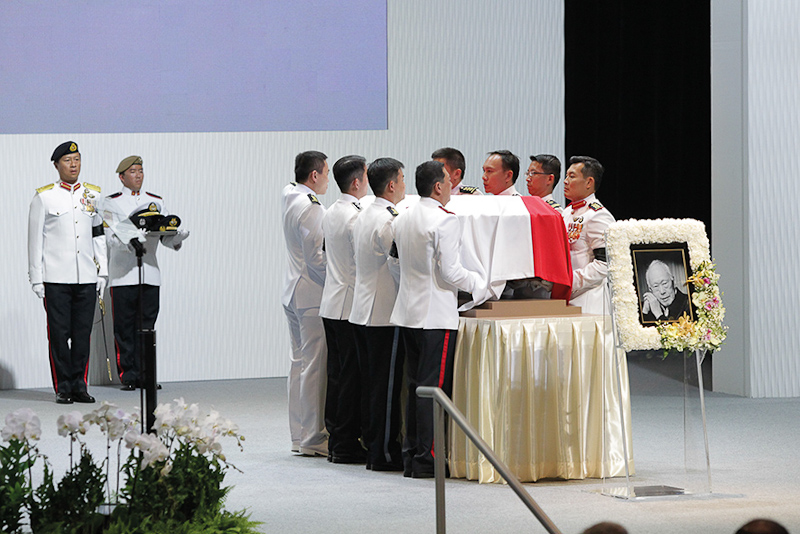
Photo courtesy of Ministry of Communications and Information.
Despite the constant changes made to the queue arrangement and the crowds they faced, the SFOC members and the other government agencies earned praise from the public for the order and efficiency with which the entire public mourning was carried out.
This was because they all had a clear sense of mission, said Mr Lau, which was "to give Mr Lee the best possible send-off that we all felt he truly deserved".
- POSTED ON
May 1, 2015
- TEXT BY
Chen Jingting









